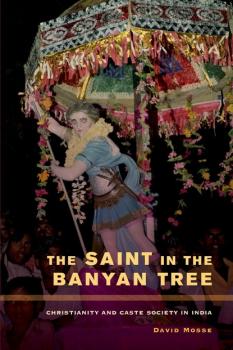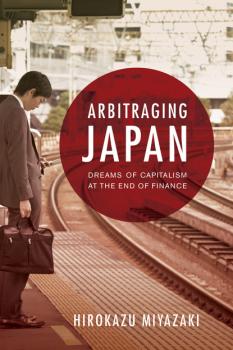ТОП просматриваемых книг сайта:
ЛИТМИР - LITMIR.BIZ - Электронная библиотека
Скачивание или чтение онлайн электронных книг.Аннотация
Beyond Hummus and Falafel is the story of how food has come to play a central role in how Palestinian citizens of Israel negotiate life and a shared cultural identity within a tense political context. At the household level, Palestinian women govern food culture in the home, replicating tradition and acting as agents of change and modernization, carefully adopting and adapting mainstream Jewish culinary practices and technologies in the kitchen. Food is at the center of how Arab culture minorities define and shape the boundaries and substance of their identity within Israel.
Аннотация
One of the critical issues in interreligious relations today is the connection, both actual and perceived, between sacred sources and the justification of violent acts as divinely mandated. <i>Fighting Words</i> makes solid text-based scholarship accessible to the general public, beginning with the premise that a balanced approach to religious pluralism in our world must build on a measured, well-informed response to the increasingly publicized and sensationalized association of terrorism and large-scale violence with religion. <br /><br />In his introduction, Renard provides background on the major scriptures of seven religious traditions—Jewish, Christian (including both the Old and New Testaments), Islamic, Baha’i, Zoroastrian, Hindu, and Sikh. Eight chapters then explore the interpretation of select facets of these scriptures, focusing on those texts so often claimed, both historically and more recently, as inspiration and justification for every kind of violence, from individual assassination to mass murder. With its nuanced consideration of a complex topic, this book is not merely about the religious sanctioning of violence but also about diverse ways of reading sacred textual sources.
Аннотация
Archaeology has always been marked by its particular care, obligation, and loyalty to things. While archaeologists may not share similar perspectives or practices, they find common ground in their concern for objects monumental and mundane. This book considers the myriad ways that archaeologists engage with things in order to craft stories, both big and small, concerning our relations with materials and the nature of the past. <br /><br />Literally the «science of old things,» archaeology does not discover the past as it was but must work with what remains. Such work involves the tangible mediation of past and present, of people and their cultural fabric, for things cannot be separated from society. Things are us. This book does not set forth a sweeping new theory. It does not seek to transform the discipline of archaeology. Rather, it aims to understand precisely what archaeologists do and to urge practitioners toward a renewed focus on and care for things.
Аннотация
The Saint in the Banyan Tree is a nuanced and historically persuasive exploration of Christianity’s remarkable trajectory as a social and cultural force in southern India. Starting in the seventeenth century, when the religion was integrated into Tamil institutions of caste and popular religiosity, this study moves into the twentieth century, when Christianity became an unexpected source of radical transformation for the country’s ‘untouchables’ (dalits). Mosse shows how caste was central to the way in which categories of ‘religion’ and ‘culture’ were formed and negotiated in missionary encounters, and how the social and semiotic possibilities of Christianity lead to a new politic of equal rights in South India. Skillfully combining archival research with anthropological fieldwork, this book examines the full cultural impact of Christianity on Indian religious, social and political life. Connecting historical ethnography to the preoccupations of priests and Jesuit social activists, Mosse throws new light on the contemporary nature of caste, conversion, religious synthesis, secularization, dalit politics, the inherent tensions of religious pluralism, and the struggle for recognition among subordinated people.
Аннотация
For many financial market professionals worldwide, the era of high finance is over. The times in which bankers and financiers were the primary movers and shakers of both economy and society have come to an abrupt halt. What has this shift meant for the future of capitalism? What has it meant for the future of the financial industry? What about the lives and careers of financial operators who were once driven by utopian visions of economic, social, and personal transformation? And what does it mean for critics of capitalism who have long predicted the end of financial institutions? Hirokazu Miyazaki answers these questions through a close examination of the careers and intellectual trajectories of a group of pioneering derivatives traders in Japan during the 1990s and 2000s.
Аннотация
Human civilizations' longest lasting artifacts are not the great Pyramids of Giza, nor the cave paintings at Lascaux, but the communications satellites that circle our planet. In a stationary orbit above the equator, the satellites that broadcast our TV signals, route our phone calls, and process our credit card transactions experience no atmospheric drag. Their inert hulls will continue to drift around Earth until the Sun expands into a red giant and engulfs them about 4.5 billion years from now.<BR /><BR /><I>The Last Pictures</I>, co-published by Creative Time Books, is rooted in the premise that these communications satellites will ultimately become the cultural and material ruins of the late 20th and early 21st centuries, far outlasting anything else humans have created. Inspired in part by ancient cave paintings, nuclear waste warning signs, and Carl Sagan's Golden Records of the 1970s, artist/geographer and MacArthur "Genius" Fellow Trevor Paglen has developed a collection of one hundred images that will be etched onto an ultra-archival, golden silicon disc. The disc, commissioned by Creative Time, will then be sent into orbit onboard the Echostar XVI satellite in September 2012, as both a time capsule and a message to the future.<BR /><BR /> The selection of 100 images, which are the centerpiece of the book, was influenced by four years of interviews with leading scientists, philosophers, anthropologists, and artists about the contradictions that characterize contemporary civilizations. Consequently, <I>The Last Pictures</I> engages some of the most profound questions of the human experience, provoking discourse about communication, deep time, and the economic, environmental, and social uncertainties that define our historical moment.<BR /><BR /><I>Copub: Creative Time Books</I>
Аннотация
California is synonymous with opportunity, prosperity, and natural beauty, but climate change will certainly influence the state’s future. Changes will affect the economy, natural resources, public health, agriculture, and the livelihoods of its residents. But how big is the risk? How will Californians adapt? What will it cost? This book is the first to ask and attempt to answer these and other questions so central to the long-term health of the state. While California is undeniably unique and diverse, the challenges it faces will be mirrored everywhere. This succinct and authoritative review of the latest evidence suggests feasible changes that can sustain prosperity, mitigate adverse impacts of climate change, and stimulate research and policy dialog across the globe. <br /><br /> The authors argue that the sooner society recognizes the reality of climate change risk, the more effectively we can begin adaptation to limit costs to present and future generations. They show that climate risk presents a new opportunity for innovation, supporting aspirations for prosperity in a lower carbon, climate altered future where we can continue economic progress without endangering the environment and ourselves.<br /><br />
Аннотация
Ecology is the centerpiece of many of the most important decisions that face humanity. <i>Roots of Ecology</i> documents the deep ancestry of this now enormously important science from the early ideas of Herodotos, Plato, and Pliny, up through those of Linnaeus and Darwin, to those that inspired Ernst Haeckel's mid-nineteenth-century neologism ecology. Based on a long-running series of regularly published columns, this important work gathers a vast literature illustrating the development of ecological and environmental concepts, ideas, and creative thought that has led to our modern view of ecology. <i>Roots of Ecology</i> should be on every ecologist's shelf.
Аннотация
Drawing on ancient historical writings, the vast array of information gleaned in recent years from the study of Hellenistic coins, and startling archaeological evidence newly unearthed in Afghanistan, Frank L. Holt sets out to rediscover the ancient civilization of Bactria. In a gripping narrative informed by the author’s deep knowledge of his subject, this book covers two centuries of Bactria’s history, from its colonization by remnants of Alexander the Great’s army to the kingdom’s collapse at the time of a devastating series of nomadic invasions. Beginning with the few tantalizing traces left behind when the ‘empire of a thousand cities’ vanished, Holt takes up that trail and follows the remarkable and sometimes perilous journey of rediscovery.<br /><br /><i>Lost World of the Ancient King</i> describes how a single bit of evidence—a Greek coin—launched a search that drew explorers to the region occupied by the tumultuous warring tribes of eighteenth- and nineteenth-century Afghanistan. Coin by coin, king by king, the history of Bactria was reconstructed using the emerging methodologies of numismatics. In the twentieth century, extraordinary ancient texts added to the evidence. Finally, one of the ‘thousand cities’ was discovered and excavated, revealing an opulent palace, treasury, temple, and other buildings. Though these great discoveries soon fell victim to the Afghan political crisis that continues today, this book provides a thrilling chronicle of the search for one of the world’s most enigmatic empires.<br /><br />
Информация о книге
Автор произведения Frank L. Holt
Аннотация
The United States is one of the most highly educated societies on earth, and also one of the most religious. In <i>The God Problem</i>, Robert Wuthnow examines how middle class Americans juggle the seemingly paradoxical relationship between faith and reason.<br /><br />Based on exceptionally rich and candid interviews with approximately two hundred people from various faiths, this book dispels the most common explanations: that Americans are adept at keeping religion and intellect separate, or that they are a nation of «joiners.» Instead, Wuthnow argues, we do this—not by coming up with rational proofs for the existence of God—but by adopting subtle usages of language that keep us from making unreasonable claims about God. In an illuminating narrative that reveals the complex negotiations many undertake in order to be religious in the modern world, Wuthnow probes the ways of talking that occur in prayers, in discussions about God, in views of heaven, in understandings of natural catastrophes and personal tragedies, and in attempts to reconcile faith with science.<br /><br />










